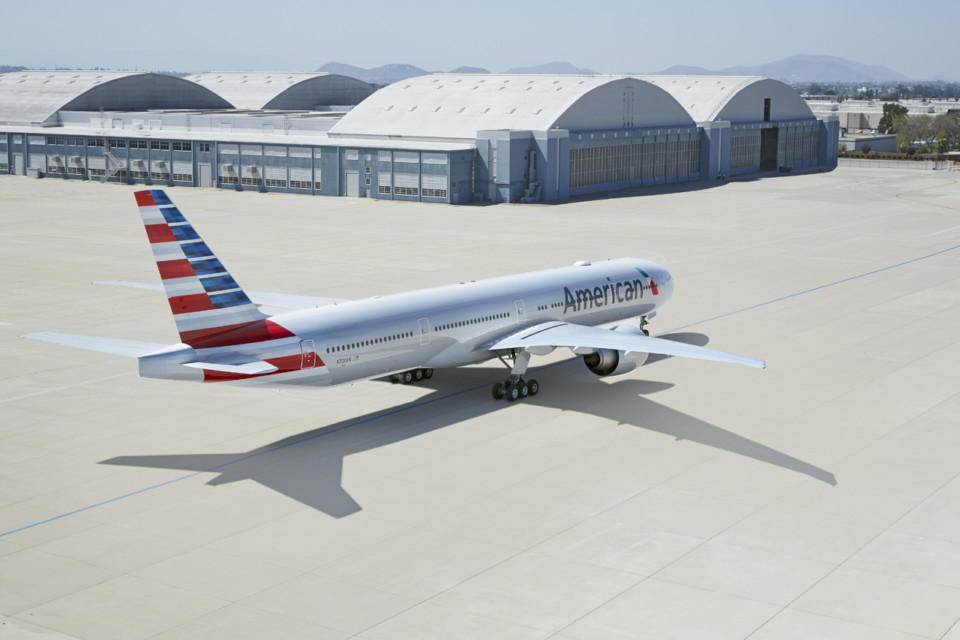Over the weekend, my jaw dropped when it came to my attention that American Airlines was cancelling most of its international network throughout the summer months. The biggest takeaway of the route changes, to me at least, is that US airlines are (smartly) drawing down all international long-haul capacity through the end of the year (using the start of the IATA Northern Winter period of October 25, 2020). The exposure to the spread of COVID-19 is becoming an even bigger risk factor by the day for people, including airline workers and employees, on flights with longer duration and higher frequency of contact.
More than anything, from a passengers’ perspective, unless the need to travel is really there, I would be terrified to board a transatlantic flight, much less go through the airport terminals and risk exposure in those facilities. Furthermore, airlines have vastly reduced the level of service one can expect to receive in-flight, so aside from a comfortable seat, there’s not much to look forward to in terms of the flying experience.
It’s probably easiest to break down the changes by geographical entity. What I found so eerie to read from the press release last week was the sheer number of routes that American “will not operate for the summer 2020 season” largely consisting of seasonal transatlantic routes that have been flown in the past (like Chicago to Venice) or were previously announced to be flown in summer 2020 (such as Philadelphia to Casablanca). Rocky’s post summarizes the route draw-downs that were announced earlier this week.
Asia Pacific
This one is perhaps the easiest to start with given that American has only two transpacific gateway hubs: Dallas/Ft. Worth and Los Angeles. The two provide some similar functions in the overall AA network, but with some differences as well. Los Angeles has a larger volume of local traffic and is a key strategic hub for American, which means that by default, LAX is the trans-pacific gateway airport. DFW has been ascending to the level of Atlanta for American Airlines, meaning its sheer volume, scale, geographic advantage, and schedule power allows it to sustain a range of long-haul international service to a variety of global markets. Both also have Latin American routes that provide come intercontinental-to-intercontinental flow, but obviously DFW much more so than LAX.
Of course, that’s all about to change. But, in the intermediary, it does not appear that American is pulling down any of its Asia-Pacific routes in 2020, and any new routes that were planned to launch this year will be postponed to next year, rather than outright cancelled.
DFW has seven transpacific routes: Tokyo Haneda, Tokyo Narita, Seoul, Beijing, Shanghai, Hong Kong, and was supposed to launch Auckland in October 2020. At present, the DFW-Tokyo Narita route is running a few times a week. Tokyo Haneda, an airport that American received rights to fly to late in March 2020, is delayed to operate its inaugural flight on July 7. That same day, American will resume services to Seoul and Hong Kong from DFW. Beijing and Shanghai will re-start on October 25 and the Auckland flight will start up in winter 2021 (likely October) following a 1-year delay.
Los Angeles also has 7 transpacific routes: Tokyo Haneda, Beijing, Shanghai, Hong Kong, Sydney, Auckland, and was supposed to launch Christchurch in October 2020. Similar to DFW-AKL, LAX-CHC is postponed by 12 months, and service to Beijing, Shanghai, and Hong Kong will resume October 25, 2020.
Oh, it was also announced that the launch of Seattle – Bangalore would be postponed until 2021. Kind of a bummer given how much excitement this route announcement generated a few weeks back, which did not get to last for too long, unfortunately.
Europe and Africa
Presently, American is operating service only between London Heathrow and Dallas/Ft. Worth, and LHR to Miami. The summer period for American is generally huge, as the carrier ramps-up a lot of seasonal transatlantic service from its Chicago O’Hare, Dallas/Ft. Worth, Philadelphia, and Charlotte gateway hubs to support a lot of unique markets such as Dubrovnik, Venice, Budapest, and for the first time this year, Krakow and Casablanca were to be two new markets introduced to American’s map.
As it stands, it appears that American will re-launch routes mostly to core business markets that are operated year-round, such as London Heathrow (for the non-DFW/MIA hubs), Paris, Madrid, Milan, Barcelona, Dublin, Rome, Zurich, and Manchester. That said, even those markets will see greatly reduced service compared to what American would have offered in prior summer periods. For example, the only transatlantic service to Rome will operate from Philadelphia, whereas previously, American flew to Rome from Chicago, Dallas/Ft. Worth, Charlotte, and New York JFK, in addition to Philly. In fact, American was supposed to go double-daily on DFW-Rome this year, and pull forward the start dates on some of its other Rome flights.
It’s interesting to see how American has opted to reinstate these flights from a scheduling and seasonality perspective. Instead of opening up all of these markets during the peak summer months, American will be re-introducing some flights in June, others in July, and the rest in October. Most of the LHR services will resume in June, along with ORD-Athens (for some interesting reason, perhaps given the fact that it is the only player in that market, American has been very successful there out of the gate?), and DFW to AMS/FRA and ORD-Dublin. The July markets will be some of the other year-round markets (along with a few of the seasonal ones like DFW-Dublin and ORD-Barcelona) and the rest will all resume in October at the start of the IATA winter season. The other LHR routes not mentioned yet, which include PHX, RDU, and the new BOS route, will launch at various points between June/July/October. Presumably, the new Seattle-LHR route will begin in Spring 2021 as previously announced, for now.
Interestingly, I saw a few missing items on this list, like DFW-CDG and DFW-MAD, both of which are operated year-round. I wonder if this was a mistake or if they’ve been chopped as well. Hope it’s not the latter. There also was no mentioning of the DFW-Tel Aviv route scheduled to commence in October 2020.
It’s also worth mentioning the markets that American will not operate this summer. Charlotte got a pretty big haircut by losing BCN, CDG, DUB, FCO, and MAD. Chicago also got hit pretty badly as it will not see CDG, FCO, nor VCE this summer, along with three planned new markets that included Budapest, Prague, and Krakow in summer 2020. But Philly was hit the hardest, which is expected given that it is American’s primary transatlantic gateway hub and many of those routes are seasonal as-is. PHL will not see service to ATH, BUD, BCN, Casablanca, Dubrovnik, Edinburgh, Reykjavik, Lisbon, Prague, Shannon, Berlin, and Venice. This represents a total market exit for most of these cities, with the exception of Athens, which will be flown from ORD. DFW and JFK also lose service to Rome.
It’s a shame that American did not have the opportunity to operate one of its largest and most exciting transatlantic summer schedule, perhaps in company history, given the impact of COVID 19. Hopefully, some, if not most, of these adds will be reconsidered in the future.
Latin America
American will reinstate service from four of its U.S. hubs (from which it previously operated service to Latin America), which include DFW, JFK, LAX, and MIA, to six Latin stations, which include Buenos Aires (EZE), Santiago (SCL), Rio de Janeiro (GIG), Sao Paulo (GRU), Brasilia (BSB), and Lima (LIM). No mentioning of some of American’s other Latin markets (such as Bogota, Quito, Georgetown, Manaus, etc) were mentioned, but presumably this press release only focused on what is considered, “long-haul” routes over a certain distance/duration and not operated by narrow-body aircraft such as the 737s and Airbus A320s.
The way it appears, most, if not all, of the long-haul Latin markets will be reinstated to the four gateway hubs as they were represented pre-COVID19. DFW will see service reinstated to EZE, GRU, LIM, and SCL in two waves: GRU and LIM will start on July 7, and EZE and SCL (October 25). LAX to EZE and GRU resume October 25, and JFK to EZE and GRU will resume in June. JFK-GIG, which is seasonal, will resume in December 2020. Miami to EZE, SCL and GRU will be the first to re-start in Latin America (at least for now) with services resuming on May 7. MIA to GRU and EZE will each pick up an extra frequency in October, on the same day that MIA-BSB resumes.
Unsurprisingly, nothing was mentioned about the extra frequencies that American intended to add from MIA to LIM, SCL, and GRU, which was something American had planned to do starting this month in response to LATAM’s departure from OneWorld.
My Take
I think the real tragedy of this situation is that this was going to be THE year for American Airlines’ International Network, as it was really taking on some new and innovative risks in entering markets like Bangalore, Tel Aviv, Christchurch, and Krakow. American has taken a lot of punches in recent years for being too reactive in its international network presence, at least relative to Delta and United, and a lot of people speculate that American relies too heavily on its joint venture partners in various regions in order to prop-up the profitability of their long-haul routes. While nobody knows the real truths of the matter besides the brains behind the scenes at AA HQ, the moral of the story is that American was really thinking outside the box this year. It is impressive that in spite of the losses like losing LATAM from OneWorld and as a partner in Latin America, the carrier responded by adding capacity to key markets like Lima and Sao Paulo and beefing up its Latin presence from DFW with strategic adds to Central America, the Caribbean, and Northern Latin America. Elsewhere in the network, there were going to be some exciting developments in Asia-Pacific with Qantas, and to a lesser degree, China Southern, along with Japan Airlines in the Northeast region. Europe was going to enter into a robust period with expanded service to Eastern Europe, more routes to London Heathrow, service to Africa and the Middle East via Casablanca and Tel Aviv, and the hopeful addition of Air Europa into the IAG JV later on down the road.
I didn’t even mention the role that Alaska also plays into all this. The point is, the big year at American isn’t going to happen in 2020. And that’s okay. What matters is, the intelligence and the strategy was there all along, and even without the chance to execute upon it, there should be nary a laugh at bringing great ideas to the table and to the minds and eyes of the public. HAAT’s off to the AA team.



